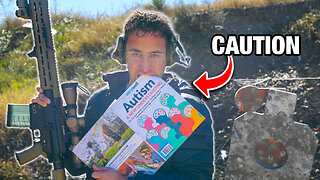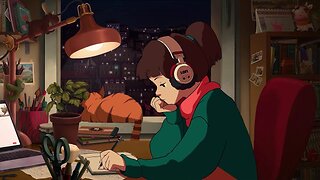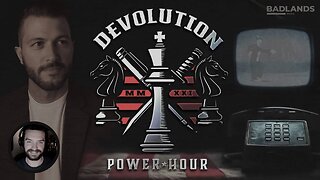Premium Only Content

Scroll & Bleed.
PTSD and Social Media: Why Trauma Survivors Enter Hostile Spaces.
For many people, social media is a space for banter, casual discourse, and, unfortunately, daily slander. For trauma survivors—particularly those living with Post-Traumatic Stress Disorder (PTSD)—this environment can be especially toxic. Yet many who struggle with PTSD still choose to participate. Why enter an arena almost guaranteed to heighten distress? And more importantly, how can sufferers—and the communities around them—navigate these spaces safely?
Why Trauma Survivors Turn to Social Media?
The search for connection
PTSD can be profoundly isolating. Survivors may feel cut off from family, friends, or wider society. Social media offers instant access to others who have lived through similar experiences, creating a sense of belonging otherwise missing in daily life.
Anonymity as safety
The screen provides a protective layer. People often find it easier to share their darkest experiences anonymously online than face-to-face in therapy or support groups.
Validation and recognition
Trauma often leaves survivors questioning their memories or doubting their worth. Hearing others say “I believe you” or “I’ve been through that too” can provide powerful validation.
Turning pain into purpose
Many trauma survivors are motivated to raise awareness, advocate for change, or support others. Social media gives them a platform to transform personal suffering into collective advocacy.
The Hidden Dangers.
While the appeal is clear, the dangers are equally undeniable.
Hostility as culture: Social media thrives on argument, mockery, and conflict. For someone with PTSD, even casual banter can be experienced as threatening, triggering fight-or-flight responses.
Troll exploitation: Those who are open about trauma often attract trolls who weaponise vulnerability. This can re-traumatize survivors and intensify symptoms.
Addictive conflict cycles: The PTSD brain tends to “lock onto” perceived threats. Social media’s endless stream of disputes can trap survivors in hypervigilance, fuelling anxiety and anger.
Echo chambers of pain: Some trauma spaces online unintentionally reinforce hopelessness, keeping people stuck in cycles of rehearsing rather than healing their wounds.
Why Survivors Stay?
If the harm is so evident, why remain? The answer lies in a mixture of compulsion and necessity:
Validation feels vital: Even negative engagement can feel like proof that their voice matters.
Fear of missing out (FOMO): Logging off may feel like being exiled from community or conversation.
Identity entanglement: For some, their online presence is intertwined with their trauma story—stepping away can feel like erasure.
Practical Advice for PTSD Sufferers on Social Media.
Define your purpose: Ask, Why am I here? Connection? Advocacy? Entertainment? Let that guide your engagement.
Control the environment: Use block and mute functions liberally. Join moderated groups where respect is enforced.
Set limits: Create time boundaries (e.g. no scrolling after 10pm). Avoid posting when tired, triggered, or under the influence.
Balance online with offline: Healing requires grounded, real-world connections—therapy, supportive friends, grounding practices.
Have an exit strategy: If symptoms intensify—flashbacks, dissociation, rage—step back. Logging off is not defeat; it’s self-preservation.
Advice for Communities and Bystanders.
Recognise trauma responses: What looks like hostility may be reactive abuse—an instinctive survival reaction, not deliberate malice.
Encourage de-escalation: Remind people they have the option to step away rather than “win” the argument.
Provide empathy, not fuel: Support survivors without enabling cycles of endless conflict.
Conclusion.
The paradox of trauma survivors on social media is clear: they are drawn to it for the very reasons it harms them. Connection, validation, and advocacy are powerful needs—but in hostile online environments, they often come at too high a cost.
The challenge is not to tell people with PTSD to simply “stay offline,” but to help them use online life wisely—building boundaries, seeking safe spaces, and recognising when engagement shifts from healing to harm.
In a digital world where cruelty can be relentless, survivors need both self-awareness and supportive communities. Because while social media can retraumatize, it can also, in the right hands and spaces, be part of the healing journey.
-
 8:59
8:59
MattMorseTV
17 hours ago $0.05 earnedTrump’s DIRE WARNING to the Senate GOP.
72.7K81 -
 2:13:33
2:13:33
Side Scrollers Podcast
19 hours agoAsmongold SUED for Emotional Distress + Hasan REJECTED+ INSANE Plane Crash + More | Side Scrollers
87.4K24 -
 21:39
21:39
Nikko Ortiz
4 days agoI Take A North Korean Shooting
79.8K11 -
 23:01
23:01
GritsGG
17 hours agoWarzone Solo Dubular! Last Night Time Solo???
13.6K2 -
 22:47
22:47
The Pascal Show
15 hours ago $0.04 earnedTHEY’RE HIDING EVIDENCE?! Candace Owens EXPOSES Foreign Connection In Charlie Kirk Shooting
22.2K25 -
 LIVE
LIVE
Lofi Girl
3 years agolofi hip hop radio 📚 - beats to relax/study to
275 watching -

FreshandFit
14 hours agoLas Vegas Takeover!
197K18 -
 2:19:29
2:19:29
Badlands Media
15 hours agoDevolution Power Hour Ep. 404
78.9K42 -
 6:02:58
6:02:58
Drew Hernandez
1 day agoGOP COOKED INTO DENIAL & 12 ISRAELI-LINKED PHONES DETECTED AT UVU DAY OF CK EXECUTION?
57.8K34 -
 2:46:08
2:46:08
TimcastIRL
11 hours agoFAA To STOP Flights Over Shutdown, May CLOSE Airspace, Thanksgiving Travel APOCALYPSE | Timcast IRL
209K133